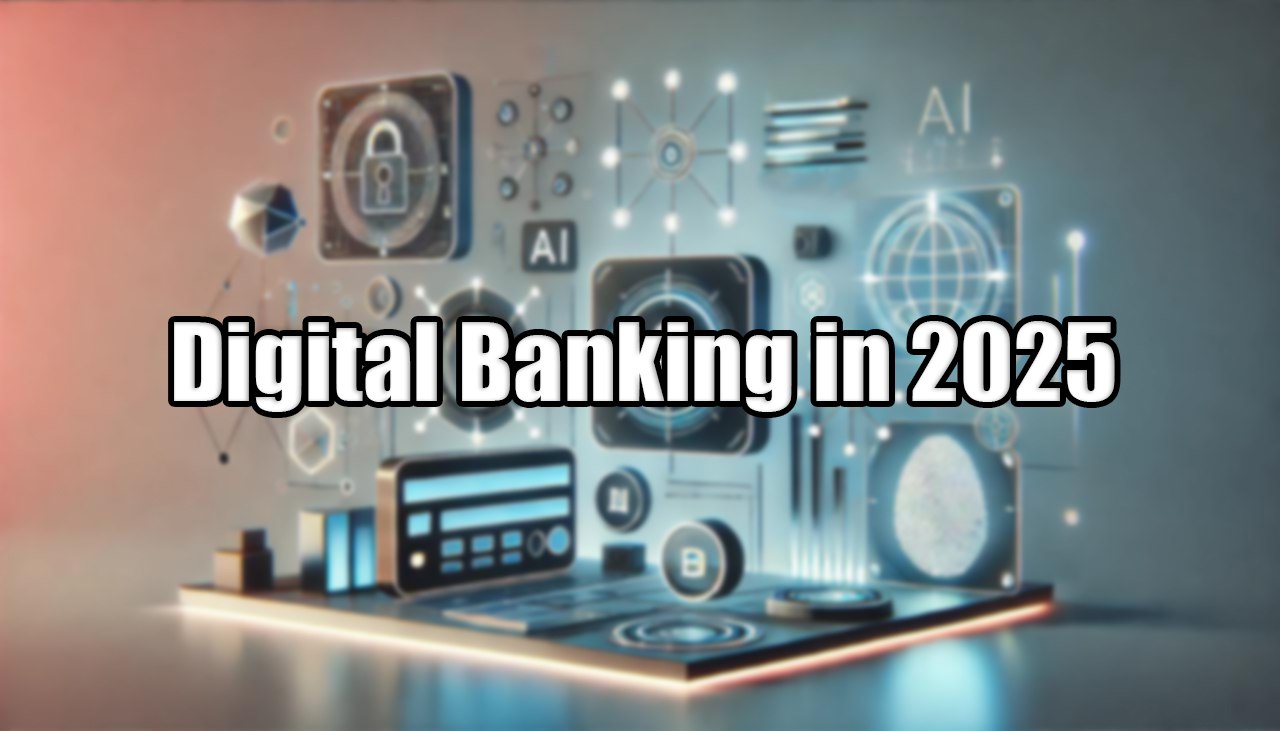Digital Banking in 2025: 10 Transformative Trends

The evolution of digital banking continues to accelerate, with 2025 marking a pivotal year for both institutions and customers. The integration of advanced technologies, decentralized systems, and real-time analytics is reshaping how banks operate and engage with their clients.
Here are ten key trends driving this transformation.
1. Open Finance Expands Beyond Banking
Open finance is evolving from the open banking model, offering seamless connectivity across a wider range of financial products. This approach enables customers to consolidate their financial lives—covering everything from savings and investments to insurance and pensions—into a single, manageable platform.
- Why It’s Transformative: By allowing third-party providers access to diverse financial data (with consent), open finance unlocks innovation, empowering users to make informed decisions.
- Impact on Banks: Traditional institutions that adopt open finance standards can position themselves as innovative hubs, catering to modern customers who value convenience.
- Example in Practice: A platform that integrates mortgage details with investment accounts could provide insights on how overpaying a loan might impact long-term investment returns.
2. Generative AI Shapes Smarter Financial Tools
Generative AI is revolutionizing banking operations by automating workflows, analyzing customer data, and predicting trends. Beyond chatbots, this technology creates personalized financial insights, detecting opportunities or risks before they materialize.
- Operational Benefits: AI tools reduce administrative burdens, from fraud detection to drafting detailed compliance reports. Machine learning refines accuracy over time, improving efficiency.
- Customer Perspective: AI assistants can track a user’s spending and suggest actionable strategies, such as adjusting budgets to meet future goals.
- Use Case: A business using AI-powered systems could receive forecasts about seasonal cash shortages, coupled with tailored credit solutions to bridge gaps.
3. Embedded Finance Redefines Customer Convenience
Embedded finance weaves financial services directly into everyday platforms, eliminating the friction of separate banking apps or websites. Businesses in non-financial industries leverage APIs to integrate payment options, loans, or insurance seamlessly.
- Why It Matters: Embedded finance turns mundane transactions into streamlined experiences, saving users time and effort.
- Business Opportunities: Retailers, for instance, can boost customer loyalty by offering in-app credit services or payment plans at checkout.
- Example in Action: Booking a flight through a travel app that offers travel insurance and installment payment options, all without switching to a separate platform.
4. Neobanks Target Niche Markets
Digital-only banks—or neobanks—are challenging traditional financial institutions by focusing on specific markets and offering tailored solutions. With minimal overhead costs, they provide cost-effective services designed for convenience.
- Specialized Features: Many neobanks cater to freelancers and entrepreneurs, providing tools like automated invoicing, tax estimation, and fee-free transfers.
- Competitive Edge: Their agility enables quick adoption of cutting-edge technology, from cryptocurrency wallets to biometric authentication.
- Example: A neobank for small businesses could integrate expense tracking, payroll services, and instant lending into its platform, simplifying operations for entrepreneurs.
5. Cybersecurity Becomes Non-Negotiable
The rise in digital banking has led to increased cyber threats, pushing financial institutions to prioritize robust security measures. Advanced tools like biometric authentication and AI-based fraud detection are becoming standard.
• Trends to Watch: Real-time transaction monitoring using AI helps flag unusual behavior, such as suspicious international transfers.
• Building Trust: Banks that demonstrate strong cybersecurity measures earn customer confidence, leading to higher retention rates.
• Real-World Scenario: A bank app automatically locks access to an account after detecting a suspicious login from an unregistered device, sending a notification to the user for verification.
6. Blockchain and Decentralized Finance Gain Momentum
Blockchain technology is becoming mainstream as banks explore its potential for transparency, security, and cost efficiency. DeFi platforms enable peer-to-peer transactions and lending without traditional intermediaries.
- How It Works: Transactions on blockchain are recorded in tamper-proof ledgers, reducing fraud and ensuring transparency for all parties.
- Banking Adoption: Financial institutions are exploring tokenized assets, cross-border payments, and smart contracts to streamline operations.
- Example Use Case: A customer borrows funds via a decentralized lending app, where collateral and loan terms are governed by a smart contract, eliminating paperwork and delays.
7. Green Banking Gains Traction
Sustainability is a driving force in modern banking, with institutions integrating eco-friendly practices and products. From renewable energy project funding to carbon-neutral operations, banks are aligning with consumer values.
- Why It’s Significant: Customers increasingly choose banks that prioritize ethical investments and sustainability initiatives.
- Business Perspective: Green financing—such as lower rates for renewable energy loans—offers growth opportunities while supporting environmental goals.
- Practical Example: A bank partners with electric vehicle manufacturers to offer special loan terms, encouraging adoption of eco-friendly transport solutions.
8. Real-Time Payments Become Standard
With advances in payment networks, real-time transactions are reshaping how money moves between individuals and businesses. Instant fund transfers simplify everything from e-commerce to international remittances.
- Why It’s Critical: Delays in traditional payment systems can hinder business growth, while real-time payments improve cash flow and customer satisfaction.
- Adoption Growth: Governments and central banks are also driving this trend, launching digital currencies that facilitate immediate settlements.
- Example in Practice: A small exporter receiving payments instantly from overseas buyers can reinvest funds quicker, improving operations and competitiveness.
9. Personalized Banking Through Analytics
By analyzing spending habits and customer behavior, data analytics enables banks to deliver personalized recommendations and services. These insights create more meaningful interactions between customers and financial institutions.
- The Shift Toward Proactive Banking: Instead of responding to requests, banks can anticipate needs and suggest solutions before customers even ask.
- Customer Benefits: Financial literacy tools embedded in apps guide users toward achieving long-term goals, such as debt reduction or retirement savings.
- Example: A personalized app notifies a customer about potential savings by refinancing their mortgage at a lower interest rate.
10. RegTech Streamlines Compliance
As regulations evolve, banks face increasing pressure to stay compliant while maintaining efficiency. Regulatory technology (RegTech) automates compliance processes, reducing time and effort while ensuring accuracy.
- How It Works: RegTech tools scan transactions for anomalies, flagging suspicious activities and generating reports for auditors in real time.
- Institutional Advantages: Automation lowers compliance costs and reduces risks of penalties for non-compliance.
- Example Use Case: A bank integrates AI to monitor anti-money laundering (AML) protocols, identifying suspicious activity patterns that manual reviews might miss.
Final Thoughts
The future of digital banking is being shaped by a combination of technological innovation and shifting consumer expectations. Banks that embrace these trends will not only remain competitive but also redefine the way financial services are delivered. From the adoption of blockchain and AI to the integration of sustainable practices, 2025 promises to be a transformative year for the banking industry.
